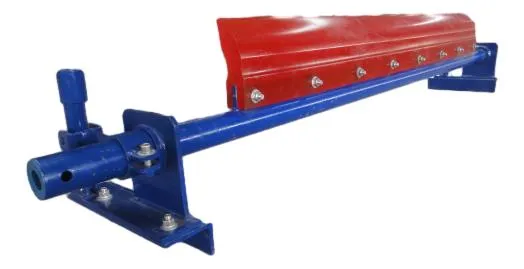 Afrikaans
Afrikaans  Albanian
Albanian  Amharic
Amharic  Arabic
Arabic  Armenian
Armenian  Azerbaijani
Azerbaijani  Basque
Basque  Belarusian
Belarusian  Bengali
Bengali  Bosnian
Bosnian  Bulgarian
Bulgarian  Catalan
Catalan  Cebuano
Cebuano  Corsican
Corsican  Croatian
Croatian  Czech
Czech  Danish
Danish  Dutch
Dutch  English
English  Esperanto
Esperanto  Estonian
Estonian  Finnish
Finnish  French
French  Frisian
Frisian  Galician
Galician  Georgian
Georgian  German
German  Greek
Greek  Gujarati
Gujarati  Haitian Creole
Haitian Creole  hausa
hausa  hawaiian
hawaiian  Hebrew
Hebrew  Hindi
Hindi  Miao
Miao  Hungarian
Hungarian  Icelandic
Icelandic  igbo
igbo  Indonesian
Indonesian  irish
irish  Italian
Italian  Japanese
Japanese  Javanese
Javanese  Kannada
Kannada  kazakh
kazakh  Khmer
Khmer  Rwandese
Rwandese  Korean
Korean  Kurdish
Kurdish  Kyrgyz
Kyrgyz  Lao
Lao  Latin
Latin  Latvian
Latvian  Lithuanian
Lithuanian  Luxembourgish
Luxembourgish  Macedonian
Macedonian  Malgashi
Malgashi  Malay
Malay  Malayalam
Malayalam  Maltese
Maltese  Maori
Maori  Marathi
Marathi  Mongolian
Mongolian  Myanmar
Myanmar  Nepali
Nepali  Norwegian
Norwegian  Norwegian
Norwegian  Occitan
Occitan  Pashto
Pashto  Persian
Persian  Polish
Polish  Portuguese
Portuguese  Punjabi
Punjabi  Romanian
Romanian  Russian
Russian  Samoan
Samoan  Scottish Gaelic
Scottish Gaelic  Serbian
Serbian  Sesotho
Sesotho  Shona
Shona  Sindhi
Sindhi  Sinhala
Sinhala  Slovak
Slovak  Slovenian
Slovenian  Somali
Somali  Spanish
Spanish  Sundanese
Sundanese  Swahili
Swahili  Swedish
Swedish  Tagalog
Tagalog  Tajik
Tajik  Tamil
Tamil  Tatar
Tatar  Telugu
Telugu  Thai
Thai  Turkish
Turkish  Turkmen
Turkmen  Ukrainian
Ukrainian  Urdu
Urdu  Uighur
Uighur  Uzbek
Uzbek  Vietnamese
Vietnamese  Welsh
Welsh  Bantu
Bantu  Yiddish
Yiddish  Yoruba
Yoruba  Zulu
Zulu Wing Pulley Conveyor System for Enhanced Material Handling Efficiency and Performance
Wing Pulley Conveyor An Essential Component in Material Handling
In the realm of material handling, efficiency and durability are paramount. One vital component that significantly influences the performance of conveyor systems is the wing pulley. Particularly used in industrial settings and bulk material transport, the wing pulley conveyor is designed to enhance the effectiveness of conveying operations while minimizing maintenance challenges. This article explores the design, functionality, advantages, and applications of wing pulley conveyors, elucidating their significance in various industries.
Understanding Wing Pulleys
Wing pulleys are characterized by their unique design, featuring a series of flat wings that extend outward from a central hub. Unlike traditional solid pulleys, wing pulleys provide several crucial benefits, including improved product discharge, reduced material buildup, and enhanced belt alignment during operation. The design typically comprises two or more wings, arranged at specific angles to ensure optimal belt support and minimal friction.
The primary purpose of a wing pulley is to act as a drive or return pulley in a conveyor system. By leveraging its wide surface area and unique shape, a wing pulley enhances belt grip and provides better traction. This is particularly crucial in applications where incline transportation is necessary or when conveying heavy materials.
Advantages of Wing Pulleys
1. Reduced Material Build-Up One of the significant challenges faced by conventional solid pulleys is the accumulation of materials on their surfaces. This can lead to inefficient operations and increased maintenance efforts. In contrast, the open design of wing pulleys promotes quick material passing and minimizes build-up, resulting in a cleaner operation environment.
2. Enhanced Self-Cleaning Properties The wing design allows for natural self-cleaning as the wings evacuate residual materials each time the conveyor belt rotates. This feature significantly lowers the need for manual cleaning, saving both time and labor costs.
3. Improved Belt Alignment Wing pulleys are designed to provide better alignment to the conveyor belt. This feature reduces belt misalignment and extends the life of both the belt and the pulley. An aligned belt translates to smoother operations and less wear and tear on components.
4. Increased Lifespan The design elements of wing pulleys contribute to increased durability. Depending on the materials used, wing pulleys can withstand harsh operating conditions, including heavy shock loads and abrasive materials.
wing pulley conveyor

5. Cost-Effectiveness Ultimately, the combined benefits of reduced maintenance, longer lifespan, and enhanced operational efficiencies lead to cost savings for industries using wing pulleys. Over time, these savings can be substantial, making wing pulleys a smart investment.
Applications of Wing Pulley Conveyors
Wing pulley conveyors are versatile and find application in various industries, including
- Mining and Aggregates In these sectors, heavy materials such as stones, gravel, and ores are transported. Wing pulleys facilitate the movement of these materials efficiently while handling the heavy loads and harsh environments.
- Agriculture Wing pulleys are commonly used in grain handling and processing facilities. Their self-cleaning capabilities ensure that grain is transported without contamination.
- Power Plants Fuel handling and ash removal systems at power plants often utilize wing pulleys due to their durability and ability to handle abrasive materials.
- Waste Management In recycling and waste management facilities, wing pulley conveyors help manage the diverse range of materials, contributing to efficient sorting and processing.
Conclusion
The wing pulley conveyor is a critical component in modern material handling systems. Its innovative design delivers multiple advantages, including reduced maintenance, improved efficiency, and enhanced durability. As industries continue to seek solutions that enhance productivity while minimizing operational costs, wing pulleys will undoubtedly play a significant role in shaping the future of conveyor technology. Their applications across sectors from mining to agriculture underscore their versatility and indispensable nature in the logistics and materials handling landscape. Embracing such technology is essential for businesses aiming to optimize their operations and maintain a competitive edge in today’s fast-paced market.
-
Revolutionizing Conveyor Reliability with Advanced Rubber Lagging PulleysNewsJul.22,2025
-
Powering Precision and Durability with Expert Manufacturers of Conveyor ComponentsNewsJul.22,2025
-
Optimizing Conveyor Systems with Advanced Conveyor AccessoriesNewsJul.22,2025
-
Maximize Conveyor Efficiency with Quality Conveyor Idler PulleysNewsJul.22,2025
-
Future-Proof Your Conveyor System with High-Performance Polyurethane RollerNewsJul.22,2025
-
Driving Efficiency Forward with Quality Idlers and RollersNewsJul.22,2025





























